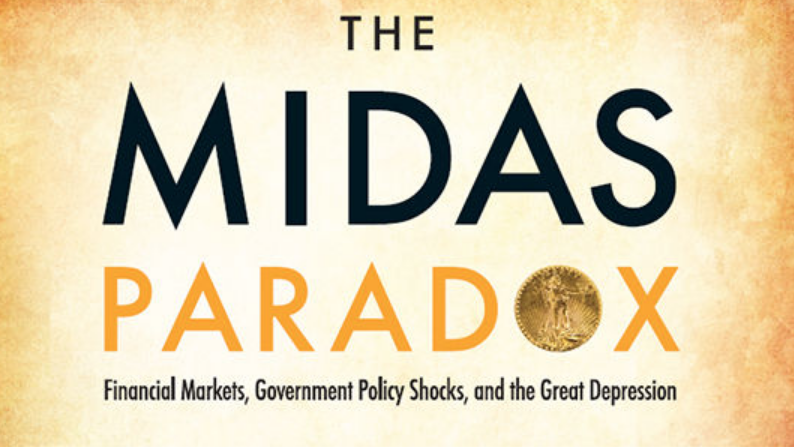Back in 2015, I wrote The Midas Paradox, which showed how gold hoarding helped to cause the Great Depression. I’ve always hoped that another (presumably younger) economist would repeat this research using updated methods. Better yet, I hoped the new study would confirm my findings.
Doug Irwin directed me to a new paper by Sören Karau that reaches a similar conclusion, using better data and much better statistical techniques. Here’s the abstract:
I identify monetary policy shocks in a structural macroeconometric framework and assess their role in causing the initial downturn in prices and production from 1929-31. In deliberate contrast to existing work on the depression, I take an international perspective that builds upon an appreciation of the gold standard system operating at the time. First, I employ a hand-collected monthly data set that covers a large share of the interwar world economy. Second, derived from a theoretical monetary framework, I model monetary disturbances as shocks to central bank gold demand as measured by the world gold reserve ratio. This is preferable not only on theoretical grounds to, say, interest rate measures of individual countries. It also allows me to employ narrative in- formation to sharpen structural shock identification based on sign restrictions. I do so by imposing a single narrative sign restriction that captures a key shift in US and French monetary policy in 1928.
In my view, the gold reserve ratio is the best measure of the stance of monetary policy during the Great Depression. Under a fiat money regime, I generally use expected NGDP growth to measure the stance of monetary policy. But central banks are somewhat constrained under a gold standard, and hence it make sense to use the one variable they can control—gold reserve ratios. Other variables such as the money stock and the interest rate are essentially endogenous, determined by global forces. The other advantage of the gold reserve ratio is that this ratio is stable when countries adhere to the so-called “rules of the game”. Hence changes in this ratio measure not just discretionary monetary policy, but also deviations from the (admittedly imprecise) rules of the game.
Karau’s paper cites previous work along these lines by myself, Doug Irwin, Clark Johnson, David Glasner and other researchers. But Karau’s paper is the one I’d point to if a younger economist asked for a more “rigorous” demonstration of our claims about the role of gold hoarding in the Depression. Here’s an excerpt:
These findings are remarkably in line with the analysis in Sumner (2015). According to his narrative, the initial slump up to the fall of 1930 was largely caused by central bank gold hoarding after which other deflationary forces became more prominent. Indeed, in Figure 5 there is another steep unexpected decline in industrial production in October and November of 1931, which is not well explained by the identified monetary shock. Instead it might be associated with the wide-spread banking panics, chiefly in the United States. In that sense then the failure of the monetary shock to account for this second decline in production actually speaks to the quality of the simple identification scheme, which is supposed to narrowly identify exogenous innovations in central bank gold hoarding rather than monetary or non-monetary financial shocks more broadly.
I strongly encourage scholars interested in the Great Depression to take a look at Karau’s paper.
And then buy my book. 🙂


READER COMMENTS
David
Jan 1 2021 at 5:54pm
I read your book about a year back and thought it quite interesting (though I lack the economic background to full appreciate it). My one qualm with the theory was that without doing my own research, it was hard to know whether you had listed all the relevant historical events and if you interpretations of said events were biased towards supporting your theory. So this paper seems to remove some of that possible bias, I’m very excited to read through it. Thanks for the link!
Scott Sumner
Jan 2 2021 at 4:41pm
David, Thanks for reading my book.
Comments are closed.